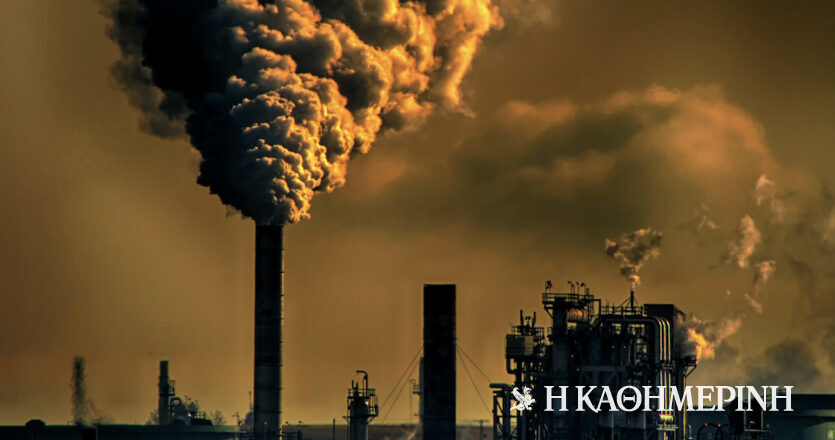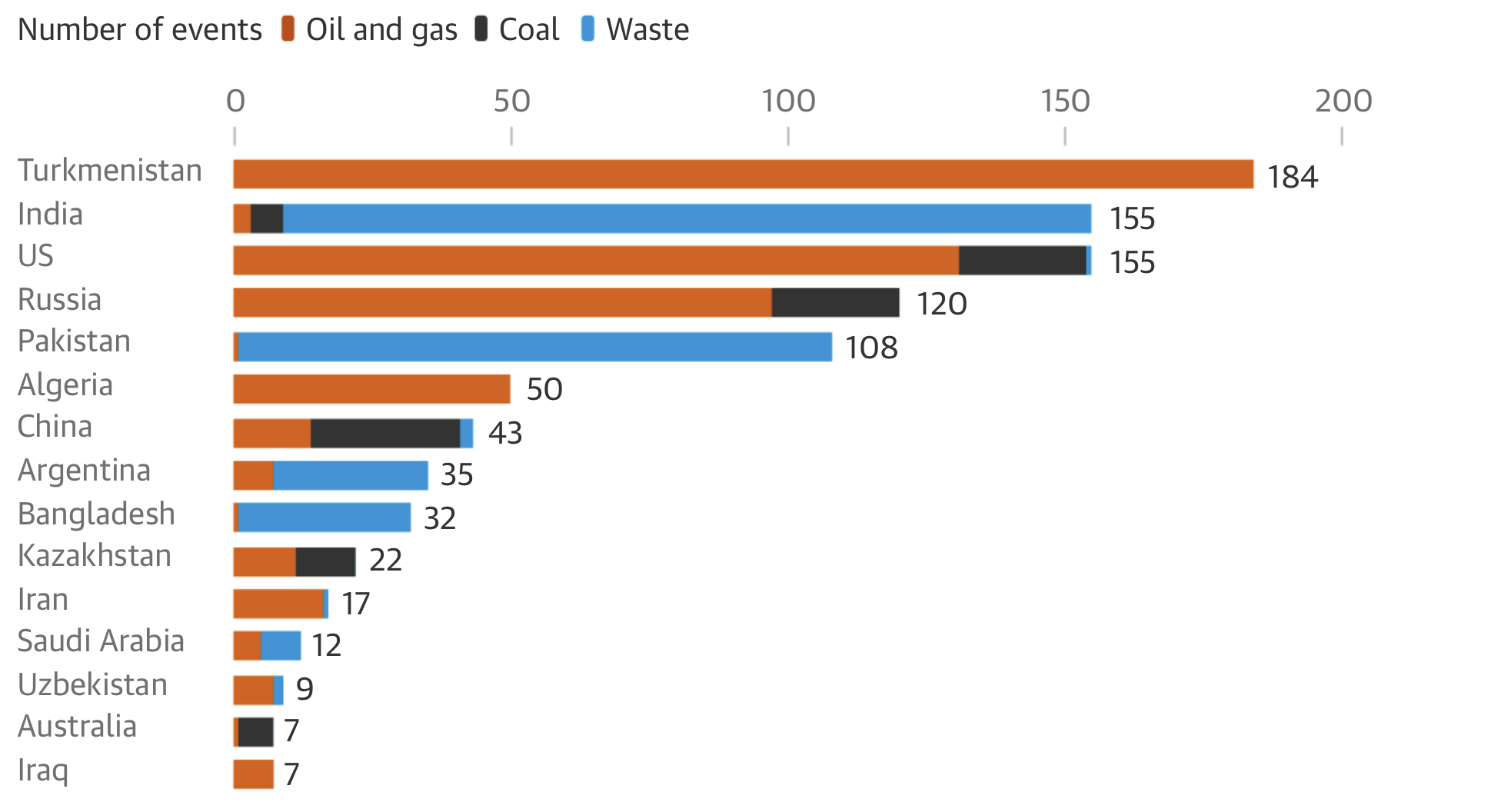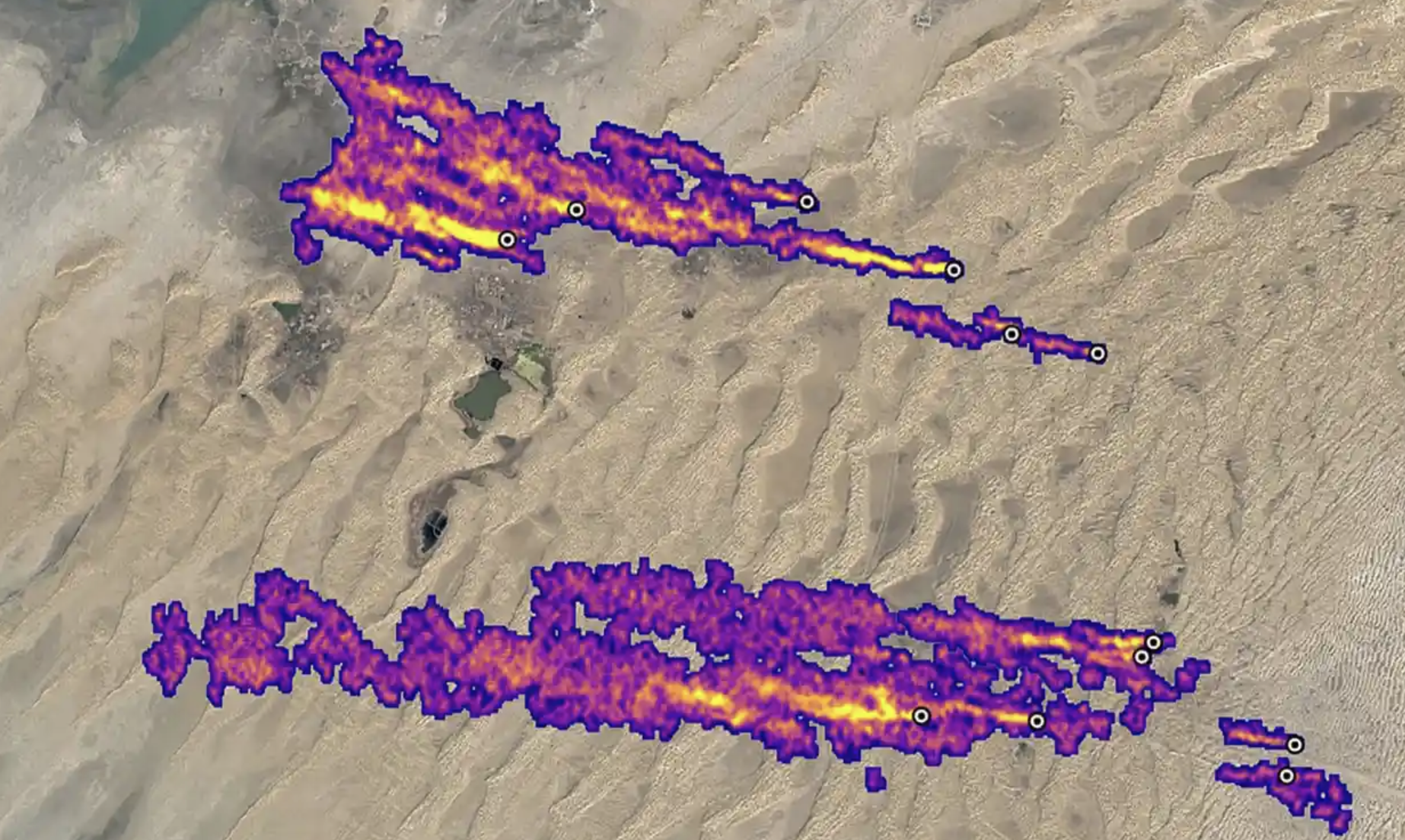
fuel, livestock and waste
About 40% of anthropogenic methane emissions come from leaks from fossil fuel exploration, production, and transportation. Emissions increased by about 50% from 2000 to 2019. 40% come from livestock and agriculture (gases from livestock dominate), and 20% from waste sites. All factors are expected to intensify.
The recent increase in methane is largely due to the activity of microbes that decompose organic matter in wetlands and in the stomachs of animals. Rising temperatures seem to allow microbes to produce more methane, which then exacerbates global warming, creating a climate “vicious cycle”.
“It’s a lot like the feedback effect, and it’s scary in a lot of ways,” Nisbett said. “We really need to get the methane under control.”

Excessive emissions
The satellite data analyzed by Kairos recorded 1,005 excess emissions in 2022, with 559 from oil and gas fields, 105 from coal mines and 340 from landfills. Leaks can last from a few hours to several months.
“Before satellite technology, we had no idea where these big events were happening, but the good thing now is that we’re at least tracking them to some degree,” said Hoglund Isakson.

Turkmenistan has the largest number of excess emissions, counting 184 such incidents. Uncontrollable, comments Christian Lelong of Kayrros. Little is known about fossil fuel production under the dictatorial regime of Turkmenistan.
The United States has had 154 excess emissions events from fossil fuel infrastructure. The largest occurred last March near San Antonio, Texas, with a blast of 147 tons per hour.
Russia recorded 120 excess emissions in 2022 while the other countries in the top 15 are Pakistan, Algeria, China, Saudi Arabia, Australia, Iran and Iraq. The second largest spill of the year – at a rate of 356 tons per hour – was recorded in Iraq, at an oil refinery near Basra.

Satellite data has revealed excess methane emissions from other anthropogenic sources as well: from rice fields, landfills and illegal activities in the natural gas grid in countries such as India, Pakistan, Bangladesh and Argentina.
Meanwhile, satellites cannot detect all events, as the presence of water affects the detection of elements in infrared. Thus, leaks from infrastructure at sea, in wet conditions, or amidst clouds and snow make it more difficult for satellites to work. The next generation of satellite sensors will have more sensitive measuring instruments.
“methane bombs”
In May 2022, The Guardian revealed an investigation which found that the world’s largest fossil fuel companies were hatching plans involving dangerous “carbon bombs”. Now, new research by the same scientists has identified 55 “methane bombs”: natural gas deposits where leakage alone from full resource exploitation leads to emissions equivalent to at least 1 billion tons of carbon dioxide.
“I am amazed at the length of this list and how many giant projects are still being touted,” said Cooney, who conducted the analysis. effects of methane front loading – Come soon after it aired. A gas leak last year killed people this year.”through the climatic effects they cause.
Natural gas fields also produce methane, which is sold to customers and burned, releasing carbon dioxide into the atmosphere. If these emissions are added to the escaping methane, the number of “methane bombs” that would have an impact equivalent to 1 billion tons of carbon dioxide rises to 112.
Methane bomb emissions are well above the emission limit of 380 billion tons of carbon dioxide, which is estimated to be required to prevent the planet from warming by more than 1.5 degrees Celsius.
achievable goal
The climate devastation caused by methane is clear, but the political momentum generated for action, as well as the role of satellite sensing, allow for cautious optimism.
In 2021, at the UN’s Cop26 climate summit in Glasgow, an international commitment to cut anthropogenic emissions by 30% by 2030 was announced. Countries now support target 150, but some “key countries” have not signed up, such as Russia, China and Turkmenistan. Iran and India.
Source: The Guardian
⇒ News of the day
follow her kathimerini.gr on Google News And be the first to know all the news
Find out the latest news from Greece and the world on kathimerini.gr

“Avid problem solver. Extreme social media junkie. Beer buff. Coffee guru. Internet geek. Travel ninja.”





More Stories
In Greece Porsche 911 50th Anniversary – How much does it cost?
PS Plus: With a free Harry Potter game, the new season begins on the service
Sony set to unveil PS5 Pro before holiday season – Playstation